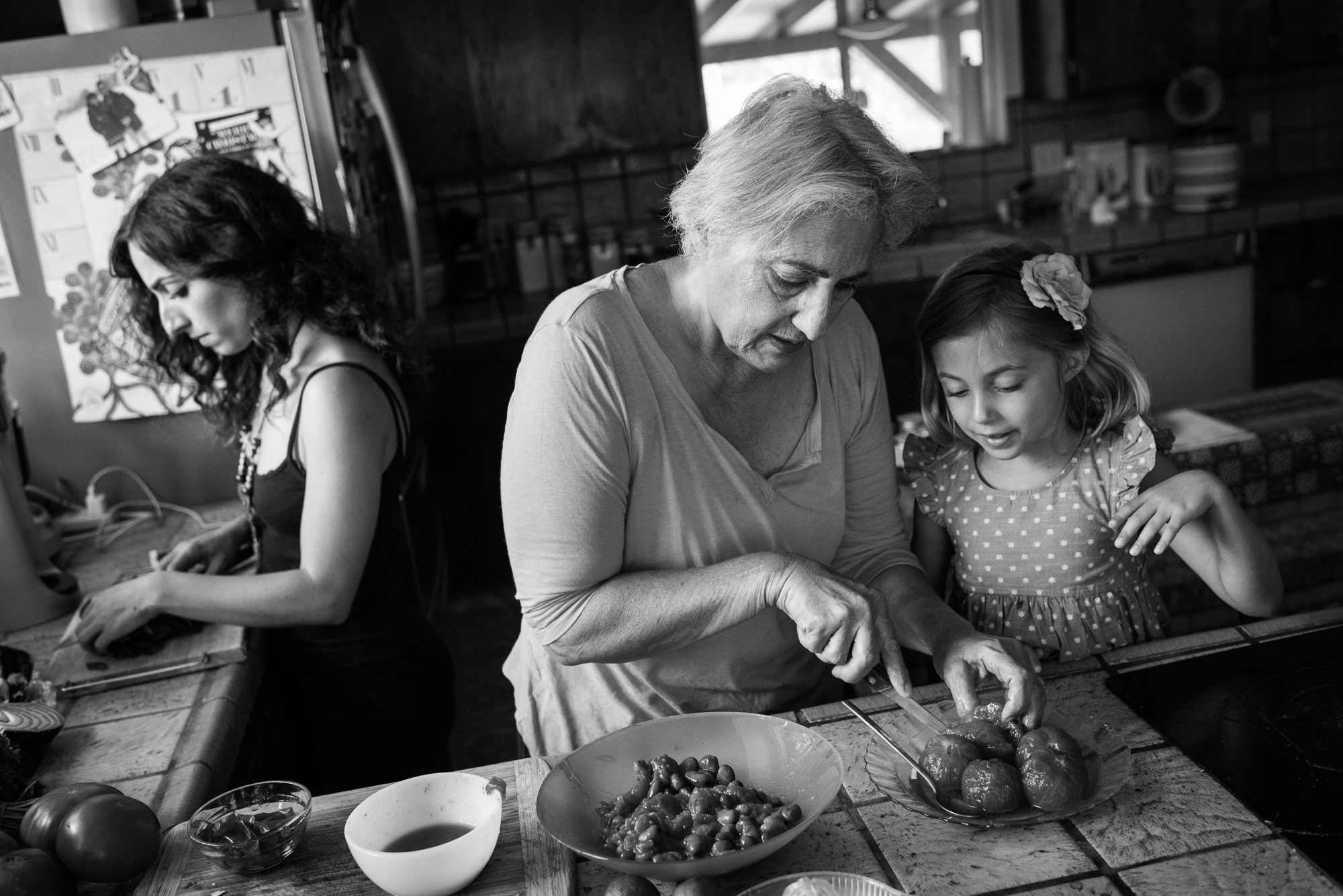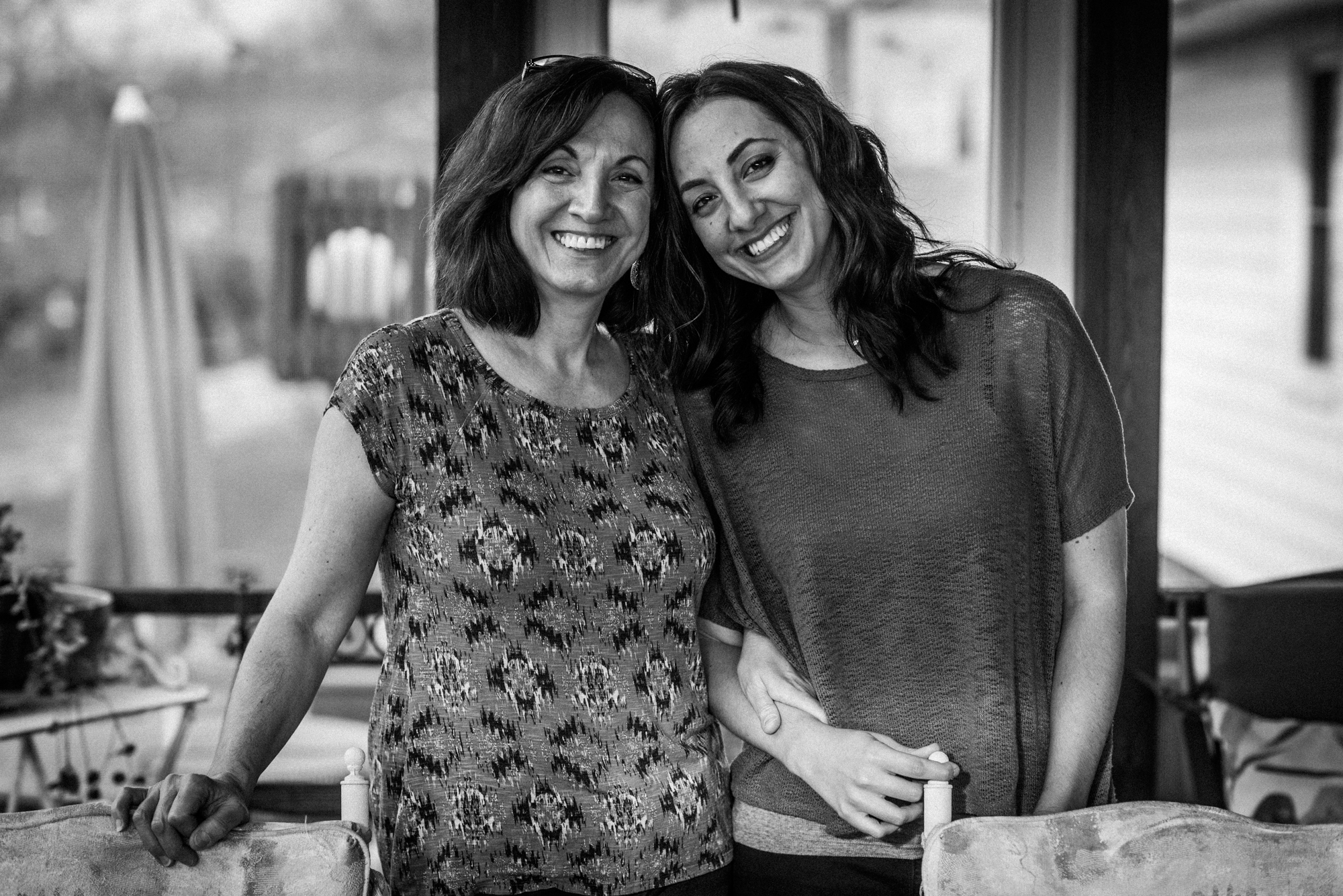A Day in the Kitchen
Maybe it’s an American custom, but there’s something in us that wants to quantify food, either by calorie count, or by portion size, or by value—whatever that means. But it’s so much more than metrics. And food is not just an essential part of our health, it’s a social fabric, weaving through generations and connecting us to our own familial and cultural histories. The food we eat—and especially the food that we cook—tells our story, in ways that can’t be measured.
This projects seeks to connect with those stories, to help preserve recipes and cooking traditions that existed long before microwaves and fast food, and to pass those on to future generations. In doing so, it’s my hope that these stories can serve as a reminder that we’re all human, in need and want of the same basic things. Our cultures and traditions may be different, but we can always come together over a shared meal.
Featured Stories
“In the face of cultural diffusion, the way we share our history generationally can be easily experienced with food.”
Recipe Archives
- Aebelskivers – with Amanda Loveless
- Apple Cake – with Mirit Cohen
- Ful (fava bean salad) – with the Chavoor Family
- Khao Piak (Hmong chicken noodle soup) – with the Yang Family
- Maneish (Syrian spinach pies) – with the Kashak Family
- Soutzoukakia (Greek meatballs) – with the Bouloubasis Family
- Tiramisu – with the Ricchiuti Family
How this Started
“Do you have plans Friday night? I’ll pick you up for a date at 5:00.”
I had known Craig long enough to trust him, even if that sounded like an early night. He picked me up, and drove to the Edison Social Club, a usually-vacant dining hall on the outskirts of town. That night it was full, and the line for dinner curved through the bar.
We sat at plastic tables, with salad and chicken noodle soup served family style, and bierocks piled between us. It was a humble meal, really, with a long history, and with personal meaning for Craig: the bierocks, he explained, were a staple amongst his Volga German ancestors. Craig is maybe 25 years my senior, in his mid-50s at the time, and still a generation younger than the average dinner guest that night. We surveyed the room, and asked each other who carries this tradition forward. Who preserves the knowledge and traditions of making the bierocks?
That question lingered for weeks, and sparked a desire to connect to food histories that existed before microwaves and fast food – before food became lost in convenience. Not to say those things don’t offer merit, but they’re…homogenized…and intentionally lacking discernible, unique cultural attributes. So I started exploring recipes and traditions that are filled with such attributes, in the kitchens of friends and neighbors.
The project has evolved over the years, and now focuses on documenting the interactions between generations, as small family histories are passed down.
Let’s Share Your Story
Want to preserve your family’s history? Recipes and photos go a long way, and I’d love to help you collect both. If this project stirs memories of family in the kitchen, or resonates in other ways, I’d love to hear more about your story and food traditions. Tell me a little more about the meals you share together, and I’ll reach out about opportunities to participate.
A Day in the Kitchen is an ongoing labor of love, and as such is free to participate.

